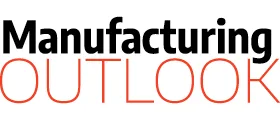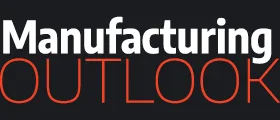Kirsty Biddiscombe, UK Head for AI, ML and Analytics at NetApp, explores clean data as the lifeblood of successful manufacturing digitalisation.
INTRODUCTION
Data is like water; it’s always flowing, you cannot survive without access to it, and it’s constantly being used, cleaned, and recycled.
But dirty water, is largely unusable – left to stagnate in water tanks or storage, it’s quickly forgotten and got rid of. When we treat that water with care and ensure it’s clean, we allow for the reallocation and consistent use and re-use of it in different ways in everyday life.
Data is the same. If firms do not have accessible, clean, secure and consistent data, artificial intelligence (AI) projects will not survive.
THE CURRENT LIE OF THE LAND
With the release of a series of ground-breaking models, in recent times, the popularity in AI language models has increased. This has led many on the internet to question whether we’re on the edge of an android apocalypse.
However, AI’s true potential lies in its ability to serve as a tool to streamline processes – no matter the size or scale of the project.
Proof of AI’s increasing integration was highlighted in McKinsey’s 2022 State of AI report. It demonstrated that AI adoption has more than doubled since 2017, with 50 percent of organisations saying they now use AI in at least one business area.
This adoption has been helping businesses in industries such as retail and utilities to innovatively serve the needs of their organisations and customers. However, it’s in manufacturing where AI is having the biggest impact.
AI-based products such as machine learning (ML) and deep learning (DL) are facilitating smart factories that can optimise increasingly complex, multi-stage processes. These tools are enabling them to become more sustainable, efficient and cost-effective.
But questions for businesses looking to integrate AI into their manufacturing processes remain – where do I start? And how do I ensure clean data is at the heart of the process?
DATA SECURITY MUST BE THE FOUNDATION
High performing AI solutions within manufacturing require secure and clean data. That is because of the long-standing dependence on legacy systems which have meant that data storage has dropped down the priority list.
Luckily, we’re starting to see a mindset shift thanks to the digitalisation of the manufacturing industry. Manufacturing CIOs now understand the importance of not just collecting and inputting data, but storing it in a safe and clean way, which is necessary when it comes to storing industry leading secrets or people’s data, for example.
By promoting the belief that effective manufacturing applications begin with data, and this data needs to be cleaned and stored in a safe and secure way, businesses will be able to plan and deliver more successful AI-powered projects.
DATA AND AI ARE THE REAL ENABLERS
As many leaders within the manufacturing industry know, how you choose to approach your data management can make or break a project. Currently, data scientists lose around 80 percent of their working hours on collecting, clearing, and detecting defective data – instead of creating actionable insights.
As mentioned previously, like water, clean data is essential for training AI algorithms so it can make more accurate predictions around priorities such as impending plant breakdowns or machine downtime. When it comes to training AI algorithms, using unclean data can be detrimental. Better data hygiene helps businesses seamlessly integrate information into existing software programmes. They can then deploy AI to automate the process – driving better efficiency and productivity.
But the success of AI projects in manufacturing rests heavily on the quality and quantity of the data it processes – the better the data, the better the results.

“Like water, clean data is essential for training AI algorithms so it can make more accurate predictions around priorities”
Kirsty Biddiscombe, UK Head for AI, ML & Analytics, NetApp
RATIONALISE AI INTERGRATION INTO BUSINESS OPERATIONS
When implementing any technology tools into your tech stack, they should bring strategic value and add to the day-to-day functioning of your business. It’s no different for AI.
Leaders should consider what’s needed for AI integration to be successful, such as the costs, challenges and any limitations. But the right approach, with the right partner on board, should have an immediate, cheaper and more sophisticated impact.
Across manufacturing, AI integration might look like introducing intelligent machine maintenance, improving the efficiency of quality control, becoming more agile with supply chain management or increasing AI-powered automation for running better processes.
Ensuring success in these areas is also about the people using the technology – how they use it, the way they embed it into the process, and whether they use it to its full potential. So, leaders need to ensure they’re leading from the top and showing their employees that these tools are useful in order to ensure the success of the deployment.
Implementing sometimes complex technology can be daunting, but ensuring your people understand it and are able to use it to their best ability is vital. Leaders need to focus on investing in training so the whole business can embrace the innovation.
In today’s market, AI has the potential to provide a huge competitive advantage for companies in manufacturing, but only if it’s set up and used in the right way. Starting with the right data set – which is clean and secure – is essential. Truly transforming a business’ approach to data and technology will prove AI’s potential.





























